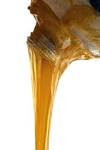Adhesives' history

Adhesives' History
Glues are part of a larger family called adhesives. Most adhesives are chemical based, while glue is generally made from organic compounds. These terms, however, are used loosely today and most adhesives are still referred to as “glue.” The earliest glues were made from various plant-based materials. The history of glue goes much farther back then most people think. The earliest evidence of the use of glue can still be observed in cave paintings made by our Neanderthal ancestors in Lascaux, France. These early artists wanted their work to last and mixed glue with the paint they used to help the colors resist the moisture of the cave walls. The oldest known glue used to hold things together dates back to approximately 200,000 BC, and is from spear stone flakes glued to wood with birch bark tar. The oldest known compound glue was made from plant gum and red ochre approximately 70,000 years BC, and was found in South Africa, so our ancestors were figuring out ways to stick two things together a long, long time ago! Later, people began experimenting with animal parts, such as teeth, hooves, and even fish air bladders.
As much as 6,000 years ago people were using animal based glues to repair ceramics. A tar-like glue was used for gluing the eyeballs of statues in their sockets in the time of the Babylonians, and the Egyptians used animal glues to adhere furniture, ivory, and papyrus. The Mongols and the Native Americans used glues to make everything from bows to canoes!
Speaking of Mongols, Genghis Khan overcame all attackers because of the exceptional power and range of the weaponry his men carried. Bows were made from laminated lemonwood and bullhorn bonded with an adhesive whose formula has since been lost to antiquity.
Medieval monks used glue made from egg whites extensively as binding material for books, and to illuminate cartouches with gold leaf. Fish glue was made form the heads, bones and skin of fish in the same way as other animal glues, but this glue tended to be too thin and less sticky. By experimenting, early man discovered that the air bladders of various fish produced much more satisfactory glue that was white and tasteless. This glue was later known as isinglass or ichthocol.

Furniture making relies heavily on glues. All of the great cabinetmakers from the sixteenth through the nineteenth centuries used glue in furniture construction. The glues they used were made from animal hides, hooves, and other parts of the animal. The great violin maker Stradivarius, whose name is synonymous with quality, used a secret adhesive process to laminate his specially treated woods. This process has been lauded as one of the reasons his violins could produce such beautiful music. Unfortunately, his methods have been lost to antiquity despite numerous attempts to rediscover them.
Glue from animal parts came into being when ancient tribes discovered that the bones, hides, skin, sinew and other connective tissues from animals could be boiled in water to separate out collagen, the protein in these tissues. The collagen was sticky and was useful for holding things together. The collagen rich parts were cleaned, and boiled or rendered down into a gelatinous substance, removing the calcium and leaving only the collagen protein. They were then dried out, ground into a powder, and later mixed with water or another liquid and heated to obtain the desired consistency. This glue was brown, brittle, hard and not waterproof. Yet this was the only glue available until World War I. At that time, casein glues made of milk, and nitrocellulose glues were first manufactured. On a side note, casein is also the basic ingredient of cheese!, advances in the chemical and plastics industries led to development of a wide range of materials called adhesives and plastic or synthetic resin glues. World War II led to a further flowering of this industry when neoprenes, epoxies and acrylonitriles were invented. These were used by the military and not available commercially until the late 1940s or early 1950s.
Sharing in :



